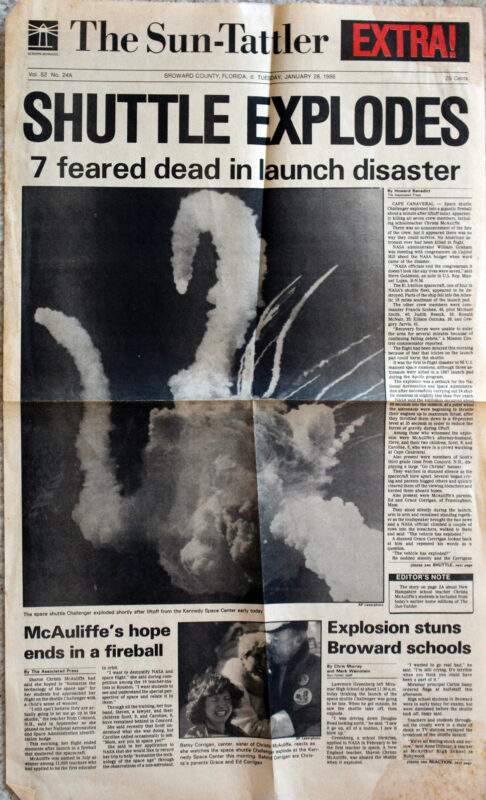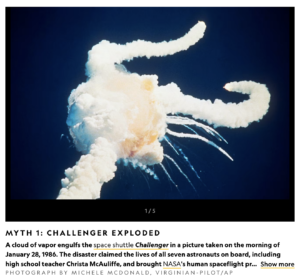
When Space Shuttle Challenger lifted off at 11:38 a.m. EST on Jan. 28, 1986, the TV networks didn’t even carry it live. Space launches had become routine, no longer big news.
That changed, 73 seconds later.
I was in the newsroom of The Sun-Tattler, a tiny but feisty daily newspaper serving Hollywood, Florida and its surrounding towns. I was a features writer, but I was quickly grabbed to help with coverage.
“Call the local airport,” the city editor told me. “Find out if any pilots were in the air this morning and if they saw anything.
“And you have 10 minutes,” he added. No pressure.
I actually did find a pilot. He told me he had seen many smoke trails from previous shuttle launches. But the one this day from Challenger, just didn’t look right to him.
I think my quote ended up in one of the stories in the four-page edition The Sun-Tattler published and wrapped around the regular edition of the already published newspaper.
I can’t remember the exact time our special edition was out on the streets, being hawked by vendors in competition with the giant Miami Herald and (Fort Lauderdale) Sun-Sentinel.
But it was quick. Damn quick. The content was reported, written, edited. The four pages were designed, typeset and sent to the printing presses. I want to say it was within 2 hours of the explosion; can’t swear to that.
I saved only the front page (and only found this within the last year). I think, inside, there was a big (file) photo of the crew and a story about all of them – the kind of thing the news service had pre-written in advance. Can’t remember what else was in there.
I was really proud of the paper and my colleagues that day. Everyone jumped in and did their very best. Note the local angle in the bottom-right, about reax in the area schools.
And notice the infamous photo of the curling smoke got published sideways. AP might have sent it that way and it was in print before any correction was made.

(Here’s a color version of the pic, turned the correct way, as published by National Geographic online many years later)